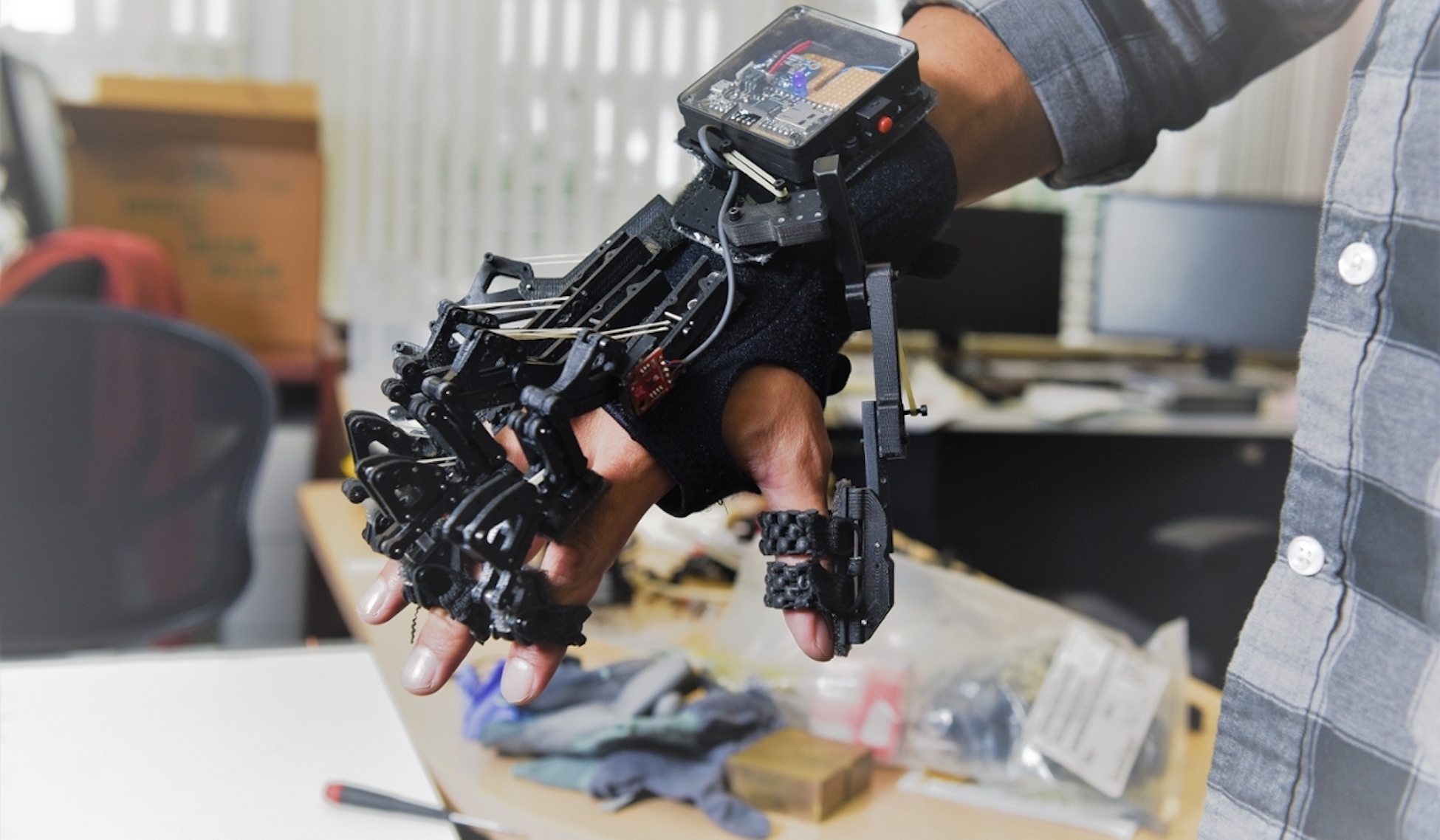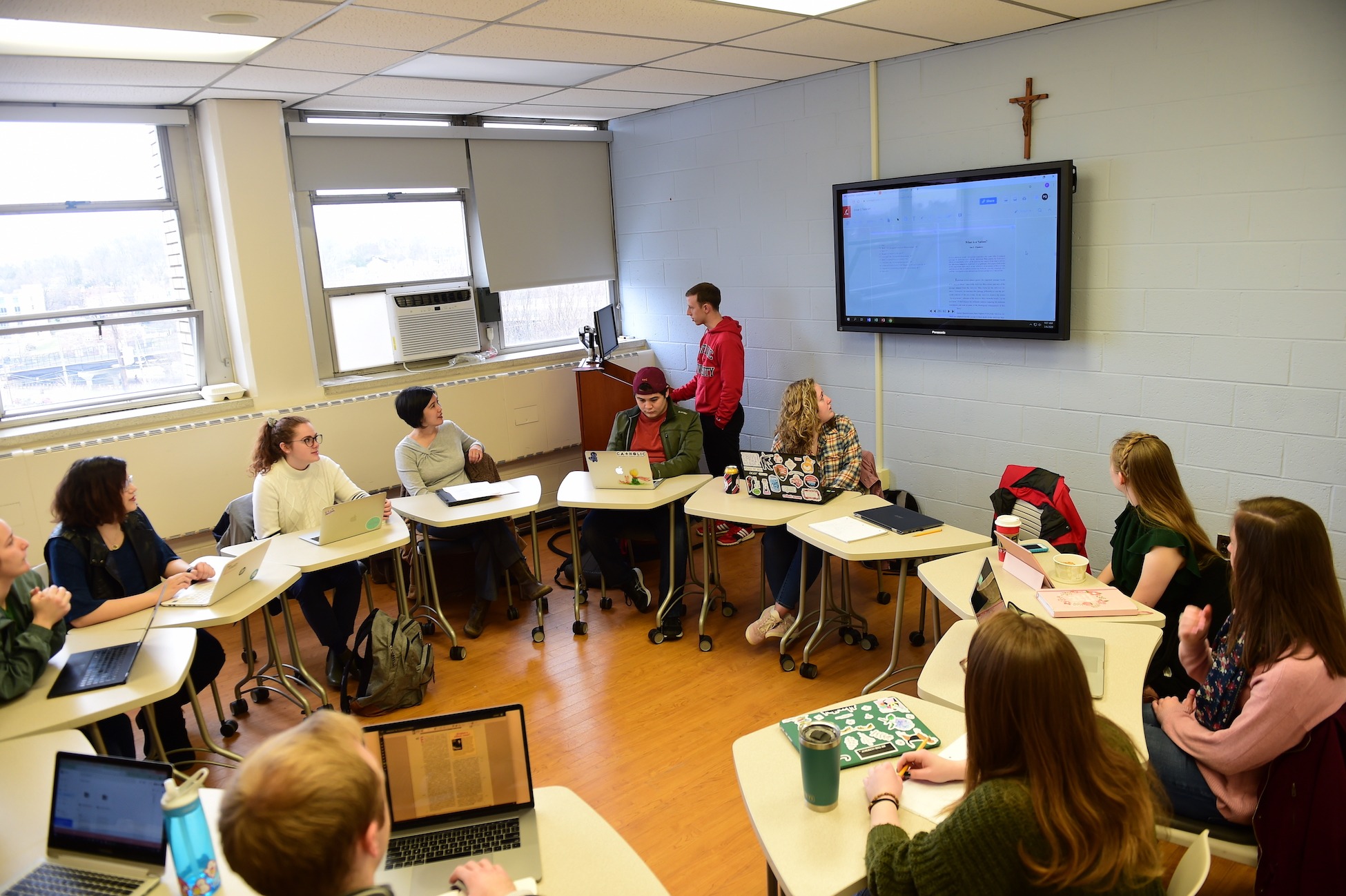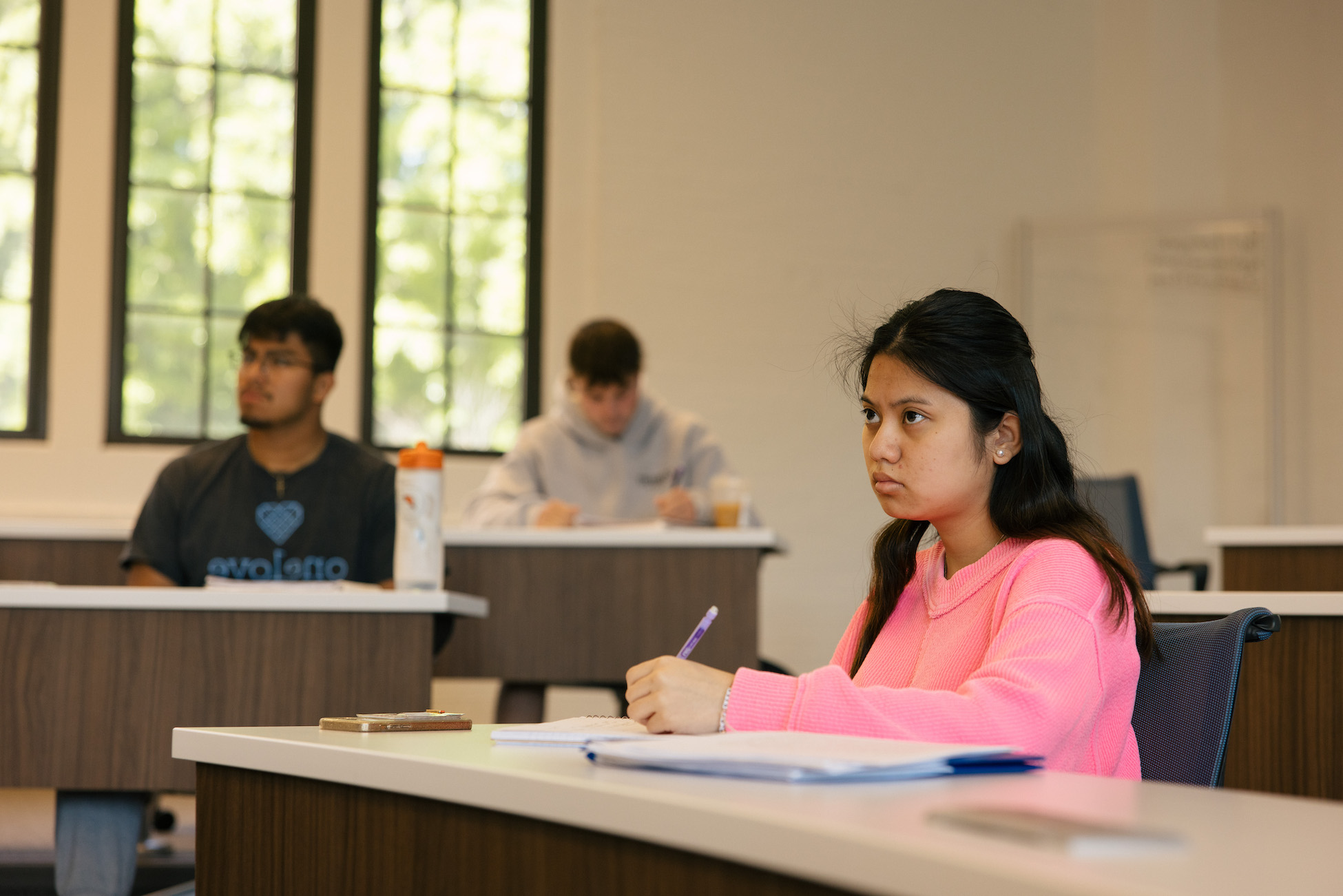Research Highlights & Innovation

Advancing Knowledge: It’s What We Do
As a top-tier research university, we go beyond simply preserving and passing on knowledge — we advance knowledge, and have been leading discoveries throughout our nearly 140-year history. There are always new ways that the University is exploring what's possible and pushing the horizon of future breakthroughs.

Current Featured Projects
At Catholic University, we believe that great discovery can happen across all of the academic disciplines. Here are some of recent research projects that are advancing knowledge and pushing innovation at the University.
An Agile Partner for NASA

Seminal Research Leads to $5m NIH/NIDA grant
A New Model for Public Engagement
The Study of Meaning, Beauty, and Understanding
-

Beauty, Wonder, and Awe As Part of Scientific Understanding
Through his recent Templeton grant, Professor Brandon Vaidyanathan conducted the world’s first large-scale study of the role of beauty in science. The findings showed that beauty matters immensely to scientists and shapes their work profoundly.
-

Saving Lives: Suicide Prevention Interventions
Professor David Jobes is one of the country’s preeminent researchers of suicide prevention. Jobes runs the University’s Suicide Prevention Lab and developed the widely used clinical intervention CAMS (Collaborative Assessment and Management of Suicidality).
-

Getting Aquinas Right: The Critical Edition of His Work
Professor Kevin White is a member of the Leonine Commission (Commissio Leonina) commissioned by Pope Leo XIII in 1880 to produce the critical edition of the Opera Omnia of St. Thomas Aquinas. The work of the Leonine Commission is ongoing.
Innovations in Nursing, Architecture, and Sustainability
-
Learning Nursing in the Metaverse
Before our nursing students even set foot in a physical hospital, they gain experience using extended reality technologies to simulate real patient care scenarios, allowing them to practice patient care and make mistakes without the risk of harming human patients.
-

Partnering with Smithsonian Institution on a Geodesic Dome
Our architecture students partnered with Smithsonian Institution staff to study, fabricate, and reconstruct the famous “Weatherbreak” geodesic dome and to revisit dome architecture as a possible solution for affordable and resilient housing for those displaced by extreme weather events.
-

Pioneering Sustainable Energy Solutions: Our Solar Array
The University has launched its innovative new solar array, which will supply renewable energy for the University and Washington, D.C. communities and will save an estimated 7.115 metric tons of greenhouse gas emissions per year.

Inventio: A Journal of Student Discovery
Inventio publishes original undergraduate research that best represents the University’s commitment to the academic and Catholic traditions that inform its mission to “discover and impart the truth.”
Dancing Through a Revolution: Content and Artistry in Soviet Ballet (by Jana Jedrych)
University Research Day
University Research Day (URD) is the University's premier annual research event for students. Our community gathers for a full day to celebrate its long research tradition and showcase current research being conducted across the disciplines. Visit the 2024 Research Day website to see the breadth of our students’ research.
-
Designing a Bacteriophage-based, Universal Flu Vaccine by CRISPR Engineering
Student: Ayobami Awe, Arts & Science (Biology), Ph.D. student
-
Brain Tumor Detection: A Hybrid Transformer-Based Approach
Student: Sandeep Shiraskar, Engineering (Electrical Engineering), Masters student
-
Reconciliation of Existentialism and Christian Metaphysics: Analysis of Albert Camus's Absurdism Through St. Augustine's Writing
Student: Marta Bystrowska, School of Arts and Sciences (Politics), Undergraduate
Did You Know?
Catholic University faculty have a rich history of research discoveries and innovation. See a few highlights that are part of our history.
Albert F. Zahm built America’s first wind tunnel equipped with instruments for scientific study here in 1901.
Catholic University physics professor Clyde Cowan was co-discoverer, with Frederick Reines, of the elementary subatomic particle called the neutrino. For this discovery, first announced in 1956, Reines was awarded the Nobel Prize in physics in 1995. He received the prize in both his and Cowan’s names.
Catholic University Provost Aaron Dominguez was a member of the team that discovered the Higgs boson particle in 2012. This “monumental milestone in particle physics” marked the start of a new era of research, according to Fabiola Gianotti, director-general of CERN (the European Organization for Nuclear Research).
The University’s Vitreous State Laboratory (VSL), led by Ian Pegg, has been pioneering a nuclear waste management method through a process called vitrification, in which radioactive waste is transformed into a very durable glass using a 2,000-degree Fahrenheit melter. This method helps contain nuclear waste and prevent it from leaching into the surrounding environment, yielding a more environmentally-friendly way of handling nuclear waste.
University-affiliated NASA researchers are part of an international team that has proven the existence of a global energy field, which has eluded scientists for decades. The ambipolar electric field was first hypothesized 60 years ago to explain the mysterious force behind the “polar wind.”
The father of the “Big Bang” theory, Catholic priest and theoretical physicist Georges Lemaître, joined the faculty of Catholic University as a guest professor in 1933-34. During this time, he advanced his discourse on the "primeval atom" (first published in 1931) — scientific work that would later become known as the "Big Bang" theory — and presented his work on the “Evolution of the Expanding Universe” to the National Academy of Sciences.
The study of psychology was introduced to the U.S. in the late 1800s, and Catholic University was among the initial handful of universities that offered classes and research in the discipline. It was the first Catholic university to do so. Today, the department boasts 11 labs that produce nationally and internationally acclaimed research.
Justine Bayard Ward developed the groundbreaking Ward Method of music instruction in 1929, which had a profound effect on how music was taught in Catholic schools throughout the 20th century and even today.
Rev. Eugene Xavier Henri Hyvernat, a member of the University’s original faculty, began assembling resources for the study of Coptic languages as early as 1889, an effort that laid the foundation for the extraordinary collection of rare books, widely used today, in the Catholic University Semitics Library.
The University curates and maintains Special Collections in its Library to support advanced research in many fields of the humanities and social sciences.
